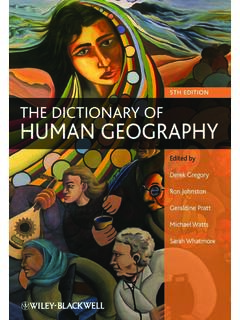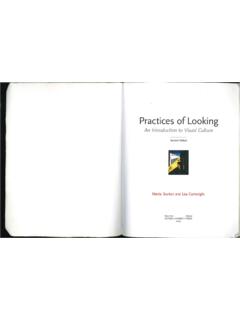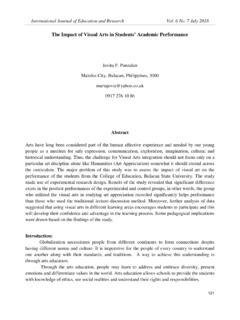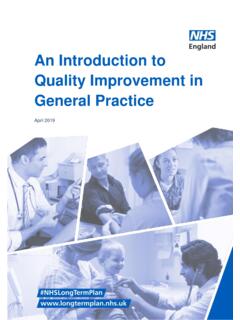Transcription of THEDEATH AND LIFE OFGREAT AMERICAN CITIES
1 ,,/ THEDEATH AND LIFE OFGREAT AMERICAN CITIES JANE JACOBS V-241 $ , THE DEATH AND LIFE OF GREAT AMERICAN CITIES Jane Jacobs VINTAGE BOOKS A Division of &ndo11l HOllse NEW YORK Acknowledgment i made to the following publications for permission to reprint portions of this book which first appeared ill their pages: Arc/)ilrctllf'lli Fo"nll, the Columbiil U'fIi;;erJily F"nnll, Hilrpcr'r MI1 SIF,.,jflC, T/;c Reporter . @ Copyright, Ip61, by lillie Jacobi IJ rights resen'cd uncler Inlem tional and Pan- AMERICAN Copy rrght COII,:,cntions. Published ill New York by Random House, Inc., and snnult:lneously ill Tvrunto, Dnacla, by Random House of Canada, Limited. ,\'Ignufacrurcd in rhe United StlItcs uf America To NEW YOAIt CITY where I ClIme [0 seek my fortune and found it by finding Bob, Jimmy, Ned and Mary for whom this book is written [00 Acknowledgment So many scoru of persons helped me with dUs book, wittingly and unwimngly, that I sh:alJ never fully be able to aclmowlcdge the toppreciation l owe and fecI.]]
2 In particular I am grateful for information. aid or criticism given by the: following persons: Saul Alinsky. Norris C. Andrews, Edmund Bacon, June Blythe, John Decker Buttner, Jr., Henry Churchill. Gndy Clay, William C. Crow, Vernon De Man, Monsignor John J. Egan. Chules Fams]ey, Carl Feiss. Robert B. Filley. Mrs. Rosario Folino, Chad bourne Gilpatric. Victor Gruen, Frank Havey, Goldie Hoffman,. Fnnk Hotchkiss, Leticu Kent, Williom H, Kirk, Mr. and Mrs. George Kostritsky, Jay L:mdcsman, The Rev. Wilbur C. Leach, Glennie M. Lcm ar, Melvin F. Levine, Edward Logue, Ellen Lurie, Eliubeth I\hnson, Roger Montgomery. Richard 'Nelson, Joseph Passonneau, Ellen Perry, Rose POrter, Ansel Robison, James W. Rouse, &.mucl A.
3 Spiegel, Sc:mlcy B. T2okel,Jack Volk man, Robc" C. Weinberg, Erik Wensbcrg, Henry Whimcy, William H. Whyte. Jr., William Wilcox. Mildred zUckcr, Bcda Zwicltcr. Nonc of these people is, of course, usponsiblc for what 1 havc writtcn; indeed, somc diugrcc hcaniJy with my point of vicw but havc helped mc gencrously ncvcnhclcss. J am gntcful also to thc Rockcfellcr Foundation for thc financial suppon which madc my rCSC:lrch and writing possiblc, to the New School for Social Research for its hospitality, and to Douglas Haskell, thc Editor of Arehiteetur"l Forum, for his cncouragc nt and forotafllntt. Most of all I am grarcful to my husband. Robert H. Jacobs, by this rime I do nor know which ideas in this book arc mine and which an his.
4 JAN!; JACOBS Contents 1 introduction , 3 , 3 , Part oft THE PECULIAR NAi'UltE OF O11ES . The uses of sidewalks: safety. 19 The uses of fii dewalks: contact, 55 The uses of sidewalks: assimilating children, 74 The uses of neighborhood parks. 89 The uses of city neighborhoods. I 11 1 Put THE. CONDITIONS FOR CITY DIV 7 The generators of diversity, 14] 8 The need for primary mixed uses, 151 , The need (of'small blocks. '78 10 The need for aged buildings. 187 11. The need for concentration, lOO 12 Some myths about diversity. 111 Put lbrft; FORCES OF MCLINE AND IlroPNQATION 13 The self-destruction of diversity, '41 14 . The curse of border vacuums, 157 Unslumming and slumming, 170 l Gradual money and cataclysmic money.)
5 191 Put Four DIFFERENT TACTIGS 17 Subsidizing dwellings, pi 18 Erosion of dries or attrition of auroffiobiles. ])8 19 visual order: irs limitations and possibilities, 371 10 Salvaging projects, 391 11 Governing and planning districts. 405 11 Th kind of problem a city is, 418 Index, i49 Illustrations The see-nes that illustrate this book are all about us. For illustn tions, please look closely at real. CITIES . While you"2fC looking. you might as well also limn, lingtr and think about what you see. THE DEATH AND LIFE OF GREAT AMERICAN CITIES , "Until lately the best tbing thllt I w" die to think of in ftlVOr of civilizati07l, apart from blind acceptance of tbe O1'd6 of the univerle, 'WIlf that it 11I4!
6 Le ponible tbe artin, the poet, tbe philosopher, II7Id the man of science. But I think tbolt is not the greaten tbmg. Now J beliew that the greatest thing is ll1 TUtter thn comer directly home to us 41l. When it is srid that we much occupid with the mems of living to liw, II17ll'WeT that tbe chief wtmh of civilizAtion it just that it maker the meum of living more complex; tbat it calls for great I17ld combined efforts, ;nste4d of simple, uncoordinated fmC!, in order fhlt the crowd 'ltt4J be fed tmd dathed and bOUled and moved from place to pillce. Btemm: more comple:r and intense inullectual iffOTts mean a fuller and richer life. They mem mMe life. Life is an end;n iuelf, tmd tbe only qumion,r to whether it is wonb living is 'Wbether you hllt't.
7 Enough of it. "I 'JlJiIJ Ifdd but If 'Word. Weare 1111 very nellr despair. Tbe rbelltbmg tbllt flollts us owr itr 'Wllt/er is cumpOtmded Of hope, fgith in the UTlt'% 'WOTtb md sure ima of effort, tmd tbe deep, sub-comciotJl content 'Wbich comer from tbe erercis of our powers." OLIV R WENDELL HOLMES, JR. \ 1 introduction This bo9k is an 3[t2ck on current city planning and rebuilding. It is also, and mostly, an lIncmpt to introduce new principles of city planning and rebuilding, different :and even opposite (rom those now taught in everything from schools of architecture and plan-__ ning to the Sunday rupplements and women's maguines. My u tack is not based on quibbles about rebuilding methods or hair splitting ahout fashions in design.)]
8 It is an attack, rather, 011 the principles and aims that have shaped modem, onhodol!: city plan ning and rebuilding. In setting tanh different principJe,s, I stuU main1y be writing about common, ordinary things: for instance, what kinds cif dry- streets are we and what kinds an: not; why some ciry parks are marvelous :md others are vice mps and dearn tr2ps: why some slums suy slums and other slums regencnu: themselves even against financi:ll and official opposition; nukes downtowns shih their centers: what, if anything, is :I city neighborhood, and .. ] INTaODUCTIOH what jobs., if any. neighborhoods in great CITIES do. In short, I shall be iting about how ciries work in real life, bttliluse this is the only way to learn whu principles of planning and what prac tices in rebuilding can promote social and economic vitality in CITIES , and what practices and principles will these attri butes.
9 Thexe is a wistful myth that if only we had enough money to spcnd-the figure is usually put at if hundred billion dollars-we could wipe out all our slums in ten yean, reverse decay in the great, dull, gray bellS that were yesterday's and day-before-yes terday's suburbs, anchor the wandering middle class and its wan dering t2X money, and perhaps even solve the rraffic problem.. But look what we have built with the first several billions: Low-income projects that become worse centers of delinquency, vandalism and general social hopelessness than the slums they were supposed to replace. Middle-income housing projects which are truly marvels of dullness and regimentacion, sC'.Jed against any buoyancy or vitality of ciry life.
10 Luxury housing projects that micigate their inanity, or tty to, with a vapid vulgarity. Cultut:ll cerm:rs that are unable to support 2 good bookstore. Civic ecorers that 2fe avoided by everyone but bums; who have fewer choices of loitering place others. Conunercial centers that are lack luster imit200ns of standardized suburban duin-5[ore shopping. Promenades that go from no place to nowhere and have no prom enaders. Expressways that eviscente great CITIES . This is not the rebuilding of CITIES . This is the sacldng of CITIES . Under the surface, these accomplishments prove even poorer than their poor pretenses. They seldom aid the city areas around them, 2S in theory they are supposed to. These ampu12ted areas typically develop g;alloping gangrene.]











